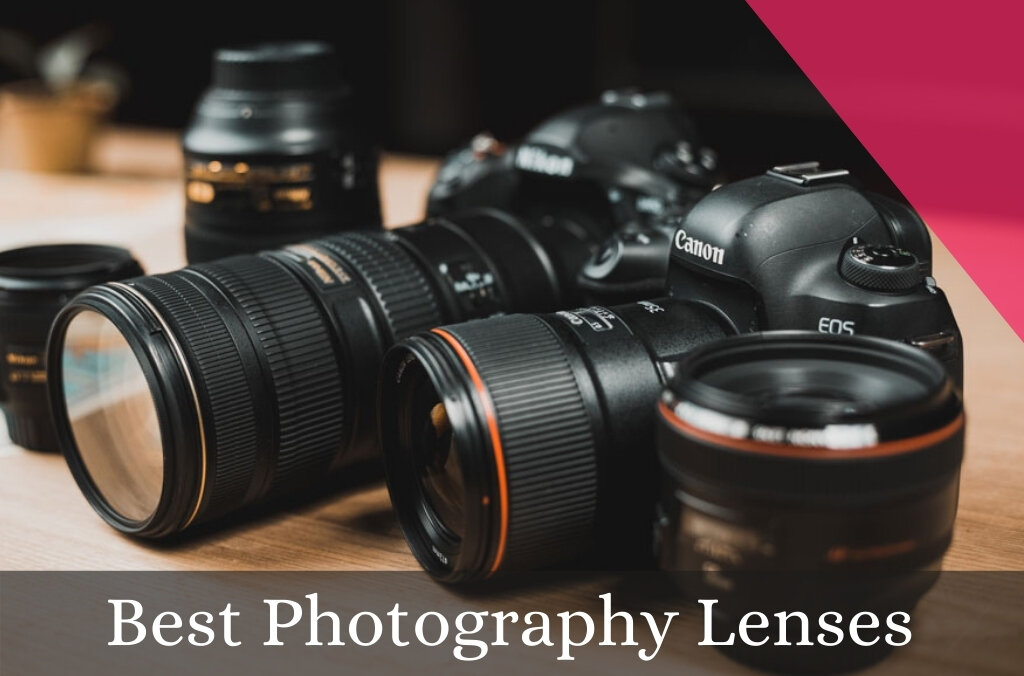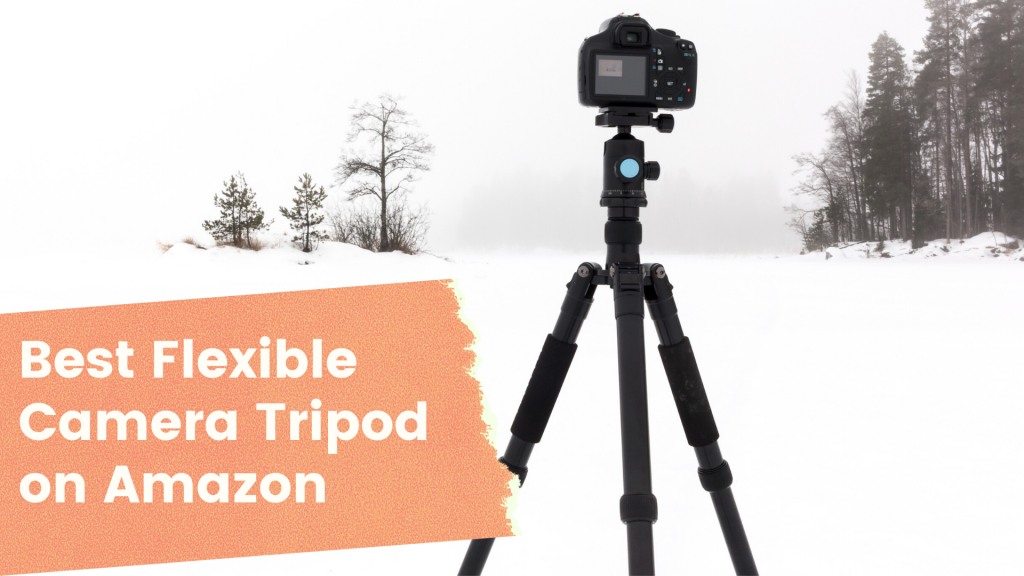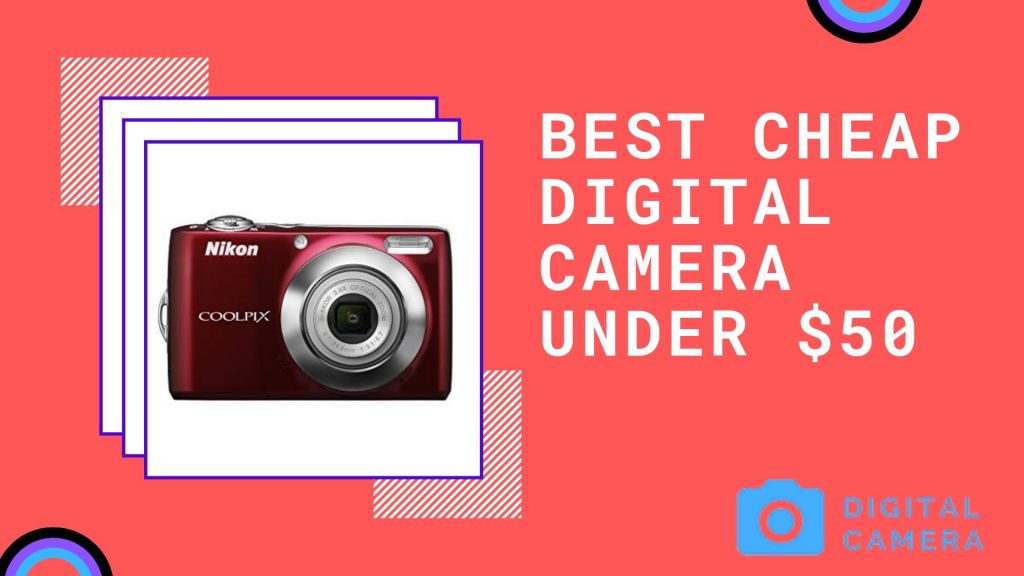As a photographer, you must agree that it is not an easy task to take Low-light photography and video. That is true even with a good camera. When there is limited light, images often turn noisy and videos lose detail. On top of that, autofocus struggles to lock properly. That is the reason we need to choose the right low-light camera for night shoots, indoor scenes, and dim environments. But the question still remains- what are the best low-light video cameras for photography? In this comprehensive guide, we will help you find out that and even choose the best one. All you need to do is keep on reading.
| Best Low-Light Camera For Photography 1. Best Overall Low-Light Camera – Sony A7S III 2. Best Full-Frame Camera for Low Light Photography & Video – Canon EOS R6 Mark II 3. Best Upper Mid-Range Camera for Low Light – Panasonic LUMIX S5 II 4. Best Mid-Range Camera for Low Light – Sony α6700 5. Best Budget Low‑Light Camera – Canon EOS R50 6. Best Entry‑Level Camera for Low Light – Nikon Z50 |
Best Low‑Light Cameras for Photography and Video: Quick Overview!
Here is a quick overview of the best low-light cameras for photography and videos with their exclusive features.
| Spec / Feature | Sony A7S III | Canon EOS R6 Mark II | Panasonic LUMIX S5 II | Sony α6700 | Canon EOS R50 | Nikon Z50 |
| Sensor | Full‑Frame | Full‑Frame | Full‑Frame | APS‑C | APS‑C | APS‑C |
| Resolution | 12 MP | 24.2 MP | 24.2 MP | 26 MP | 24.2 MP | 20.9 MP |
| ISO Range | 80–409,600 | 100–102,400 | 100–51,200 | 100–32,000 | 100–25,600 | 100–51,200 |
| Video Capabilities | 4K 120p, 10‑bit 4:2:2 | 4K 60p, 10‑bit 4:2:2 | 6K 30p / 4K 60p, 10‑bit | 4K 60p, 10‑bit 4:2:2 | 4K 30p | 4K 30p / Full HD 120p |
| Max Video FPS | 120 fps | 180 fps Full HD | 60 fps | 120 fps (cropped) | 30 fps | 120 fps |
| Autofocus | Eye AF + AI tracking | Dual Pixel AF II | Hybrid AF 779 points | AI‑enhanced phase‑detect | Dual Pixel AF | Hybrid AF 209 points |
| In‑Body Stabilization | 5‑axis IBIS | 5‑axis IBIS | 5‑axis IBIS | 5‑axis IBIS | No | No |
| Burst Mode | 10 fps | 12 fps mech / 40 fps elec | 9 fps | 11 fps | 6 fps | 11 fps |
| Viewfinder | 9.44 M‑dot EVF | 3.69 M‑dot EVF | EVF | 2.36 M‑dot EVF | EVF | 2.36 M‑dot EVF |
| Screen | 3″ Vari‑angle touchscreen | Fully articulating touch screen | Fully articulating touch screen | Fully articulating touch screen | Fully articulating touch screen | Tilting touchscreen |
| Build / Weather Sealing | Excellent, weather‑sealed | Excellent, weather‑sealed | Very Good, weather‑sealed | Good | Good | Good |
| Best For | Professional low‑light video & hybrid | Hybrid shooters (photo + video) | Hybrid & video‑focused creators | Mid‑range hybrid & content creators | Entry‑level vloggers & beginners | Entry‑level travel & casual shooting |
| Price Range | High | High‑Medium | Medium | Medium | Low | Low |
Sony A7S III: Best Low-Light Video Camera
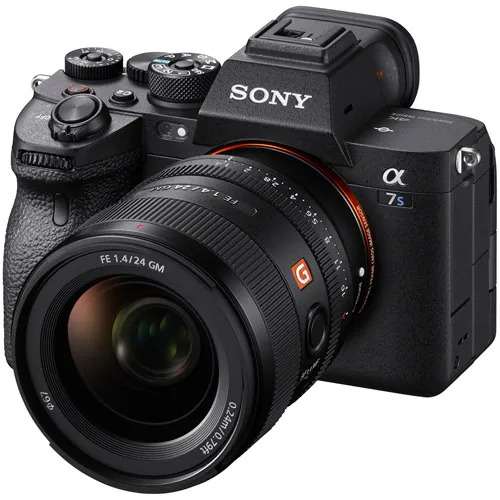
| Build Quality: Excellent Low‑Light / High ISO Performance: Outstanding Ergonomics & Handling: Excellent Features: Excellent Metering & Focus Accuracy: Very Good to Excellent Image Quality (RAW): Very Good Image Quality (JPEG): Very Good Value: Very Good |
The Sony A7S III is the easiest and best full-frame camera to use in very dark places. We can make clean video and usable photos at high ISO with the help of this camera. So, if you are someone who needs the best low-light results with reliable video features, you must consider this camera.
Of course, there are many more reasons to say so!
The Sony A7S III excels in low-light performance. That is thanks to its 12MP sensor with large photosites. It delivers very clean images even at high ISO values. Moreover, it has lower resolution limits for heavy cropping or large prints compared with 24–45MP cameras. That is why it produces excellent image quality for web, social media, and modest prints.
For videos, the camera offers internal 10-bit 4:2:2 4K recording up to 120fps. It ensures long record times and effective thermal management for extended low-light shoots. That makes the Sony A7S III camera suitable for professional videographers and hybrid shooters, content creators, filmmakers, and photographers who often shoot in very dark conditions
Pros and cons
Here are the pros and cons of the Sony A7S III camera.
| Pros | Cons |
|---|---|
| Outstanding high-ISO performance for video and stills.Internal 10-bit 4:2:2 4K up to 120p with long record times.Strong heat management and professional video features Excellent autofocus in low light for hybrid shooting. | Low 12MP still resolution & Expensive |
Canon EOS R6 Mark II: Best Full-Frame Camera for Low Light Photography & Video
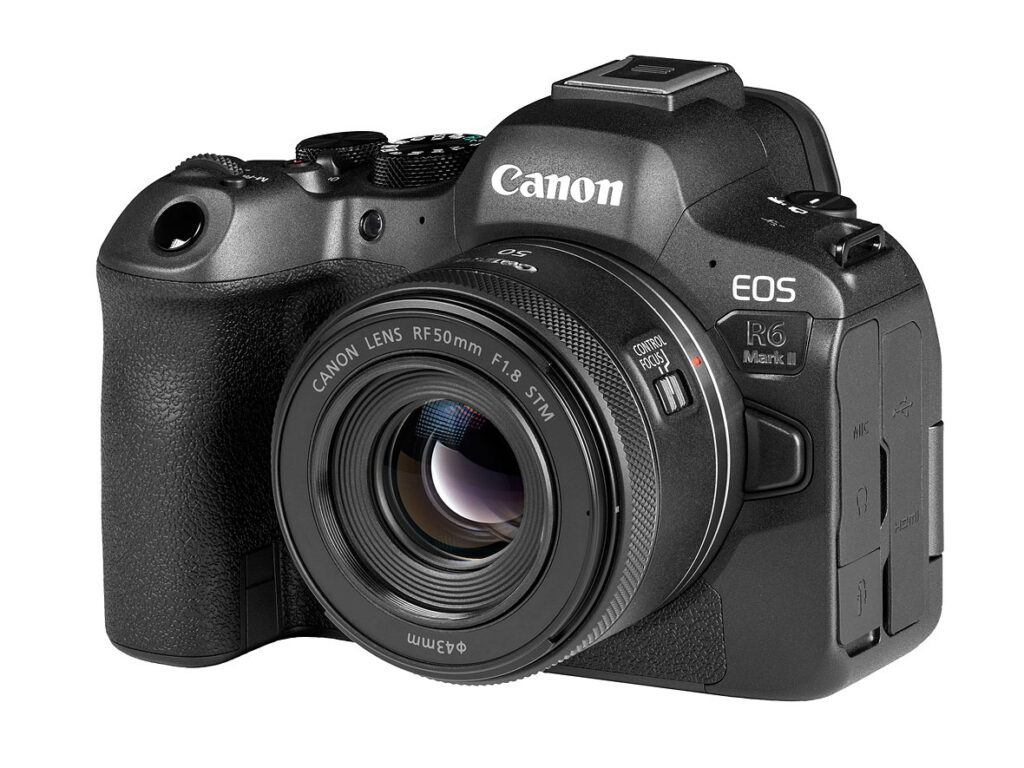
| Build Quality: Excellent Low‑Light / High ISO Performance: Very Good Ergonomics & Handling: Very Good to Excellent Features: Excellent Metering & Focus Accuracy: Excellent Image Quality (RAW): Excellent Image Quality (JPEG): Very Good Value: upper mid‑range |
The Canon EOS R6 Mark II stands out as one of the best full-frame hybrid cameras for low-light photography and video. It offers excellent low-light performance, strong image stabilization, and reliable autofocus.
The Canon EOS R6 Mark II works well in low-light conditions due to its 24.2-megapixel full-frame sensor and Canon’s powerful DIGIC X image processor. They together offer excellent noise control at high ISO settings. Moreover, its autofocus system works in near-dark conditions down to around -6.5 EV of light.
For video, the EOS R6 Mark II is also very capable. It can record 4K video at 60 frames per second without major overheating issues. So, the camera can be your reliable partner for longer shoots in low light. Moreover, you can have well control over video noise at higher ISOs, thanks again to the sensor and image processor working together. It makes footage cleaner and easier to grade in post-production.
Pros and Cons
| Pros | Cons |
| Excellent low-light autofocus performanceStrong in-body image stabilizationClean high-ISO performance Good noise control. Reliable 4K/60p video recording No major heat issues. | Video recording limits aren’t as high as specialist cinema-style bodies. |
Panasonic LUMIX S5 II: Best Upper Mid-Range Camera for Low Light
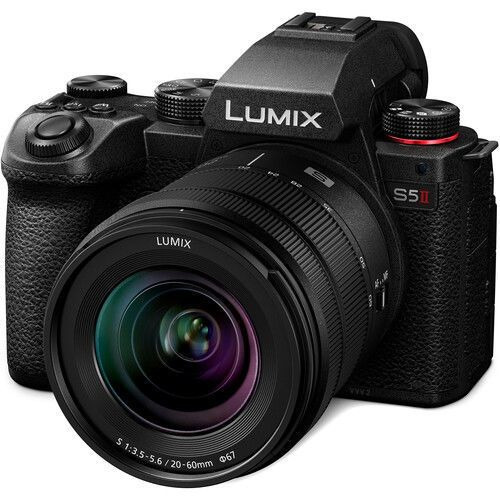
| Build Quality: Very Good Features: Excellent Metering & Focus Accuracy: Good to Very Good Image Quality (RAW): Very Good Image Quality (JPEG): Very Good Low‑Light / High ISO Performance: Very Good Viewfinder / Screen: Very Good Movie / Video Mode: Excellent Value: Very Good |
Coming to the next best low-light camera for photography. In case you want a strong upper mid-range full-frame camera that performs very well in low light, I’ll personally suggest you consider the Panasonic LUMIX S5 II. You know, the camera balances image quality, noise control, stabilization, and features better than many cameras in its price class.
As for the camera, it uses a 24.2-megapixel full-frame sensor combined with Panasonic’s improved Venus Engine processor. It also includes Dual Native ISO technology. Ultimately, it gives the camera two “base” sensitivities – ISO 640 and ISO 4000. So, what’s the benefit?
Dual Native ISO helps the camera handle noise much better in dim settings by letting it stay clean even at higher ISO values. It makes it suitable for darker scenes without heavy grain in photos and video.
I must say that its dynamic range is solid. It helps you retain detail in both shadows and highlights. You know that’s a big advantage when you are shooting in uneven or mixed lighting situations.
On top of that, you won’t have to struggle with overheating in 4K modes. That means you can record longer clips without worrying about cut-offs during low-light shoots.
Pros and Cons
| Pros | Cons |
| Dual Native ISO Better noise control at higher sensitivities. Strong IBIS Good dynamic range No overheating6K and 4K video options with 10-bit color. | Autofocus can be inconsistent in very low light The camera body is a bit heavier and larger |
Sony α6700: Best Mid-Range Camera for Low Light
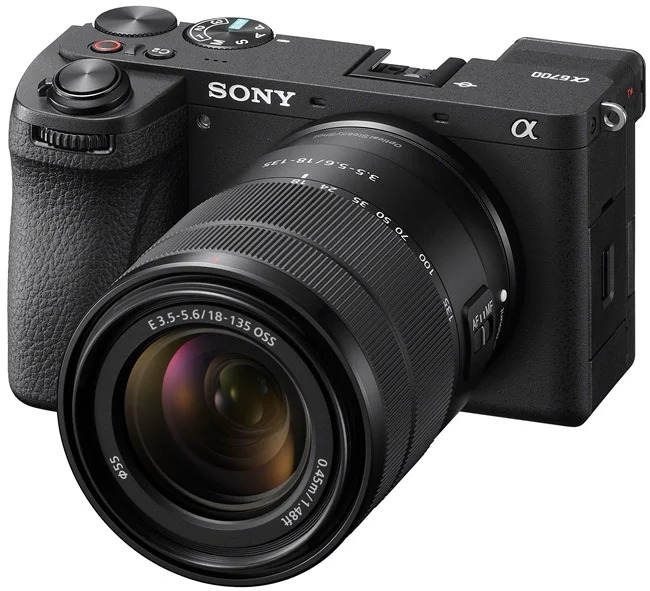
| Ergonomics & Handling: Very Good Low‑Light / High ISO Performance: Good to Very Good Build Quality: Very Good Features: Excellent Metering & Focus Accuracy: Excellent Image Quality (RAW): Very Good Image Quality (JPEG): Very Good Performance: Excellent Movie / Video Mode: Excellent Value: Very Good |
Searching for a mid-range mirrorless camera that balances performance, versatility, and value? Then consider the Sony α6700. The camera is an excellent choice for both photography and video in low-light conditions.
Its 26MP back-illuminated APS-C sensor with the BIONZ XR processor and AI-powered autofocus captures clean and detailed images. That is even when light is limited. On the other hand, the 5-axis in-body stabilization helps reduce blur during handheld shooting. You know, what is more impressive? For stills, it handles shadows and highlights well. It also keeps noise under control up to mid-high ISO settings and locks focus reliably on moving subjects.
As for videos, the α6700 impresses us with 4K recording up to 120fps and high-quality 10-bit 4:2:2 capture for smooth slow motion. Stabilization and profiles like S-Log3 and S-Cinetone further enhance its low-light video performance. In simple words, the α6700 offers us the best blends of image quality, autofocus, and video capabilities, making it a perfect choice for hybrid shooters.
Pros and Cons
| Pros | Cons |
| Strong autofocus AI subject detection and Eye AF 5-axis IBIS Excellent video specs, including 4K up to 120 fps, oversampled 4K 60p, and 10-bit recording.Compact and relatively lightweightGood for travel and run-and-gun shooting. | APS-C sensors usually won’t match full-frame cameras Noise becomes more visible at very high ISO values |
Canon EOS R50: Best Budget Low‑Light Camera
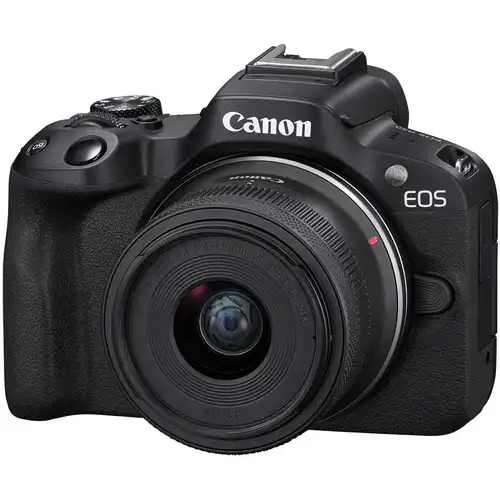
| Build Quality: Good Ergonomics & Handling: Very Good Features: Very Good Metering & Focus Accuracy: Very Good Image Quality: Good to Very Good Low‑Light / High ISO Performance: Good Movie / Video Mode: Good to Very Good Value: Very Good |
When it comes to low-light shooting, and you also want a budget-friendly option, surprisingly, the Canon EOS R50 is far more capable than that. Its 24.2 MP APS-C sensor captures cleaner images at higher ISO than many entry-level cameras. Moreover, Canon’s image processor helps keep noise under control and preserves colors even in dim settings.
The Dual Pixel CMOS AF system is impressively reliable. It tracks subjects well when the contrast is low. You know it is the feature that most budget models lack. For stills, it handles everyday low-light situations like indoor gatherings and evening street scenes. You can also make casual portraits with more confidence than basic point-and-shoots.
The camera also shines on the video side. The R50 records sharp 4K clips up to 30 fps. Due to its natural colors and dependable autofocus, it makes it ideal for beginner vloggers or social media content. However, there is one caveat that its stabilization isn’t top-tier. However, when you pair it with a stabilized lens or careful handheld technique, you can still produce smooth footage. So, ultimately, the Canon EOS R50 is a solid all-around starter camera for low-light photography and video.
Pros and Cons
| Pros | Cons |
| Affordable and beginner-friendly. Strong autofocus performance for its class. Good photo quality in moderate low light. 4K video and reliable tracking for content creation. | Limited native lens ecosystem IBIS may be absent or less effective than higher models |
Nikon Z50: Best Entry‑Level Camera for Low Light

| Build Quality: Good Ergonomics & Handling: Very Good Features: Very Good Metering & Focus Accuracy: Very Good Image Quality: Very Good Low-Light / High ISO Performance: Good Viewfinder / Screen: Very Good Movie / Video Mode: Good to Very Good Value: Very Good |
If you are just starting low-light photography or video, the Nikon Z50 can be a good option for you to choose. Its 20.9‑MP APS‑C sensor gathers plenty of light, helping keep images cleaner at higher ISO settings. Moreover, Nikon’s processing keeps noise under control and preserves detail in darker scenes. You can handle photography of indoor gatherings, evening street shots, and low-light portraits with this camera.
That is not it! Its ergonomics make framing and shooting easier in tricky lighting situations for beginners. Video performance is solid, too. With an uncropped 4K UHD recording and reliable autofocus, you can make impressive videos even in dim conditions.
Pros and Cons
| Pros | Cons |
| Affordable and beginner‑friendlyStrong low‑light performance for the class. 4K video with good image quality, even indoors or at dusk. Small and lightweight bodyEasy to carry. Good autofocus performance for photos and video. | No in‑body image stabilization (IBIS)Smaller sensor than full‑frame camerasLens selection for APS‑C Z‑mount is smaller |
How Much Do the Best Low-light Cameras For Photography Cost?
When it comes to low-light photography, the make-or-break of the shooting success largely depends on the camera you choose. But just choosing the best camera is not enough, as pricing matters a lot. So, how much can the mentioned low-light cameras cost you? Let us check it out in the overview table below.
| Camera | Approx. Price (Body Only) | Price Type | Best For |
| Sony A7S III | $3,500–$3,800+ | Premium | Professional hybrid low‑light video |
| Canon EOS R6 Mark II | $2,000–$2,500+ | Upper mid‑range | Hybrid shooters and event work |
| Panasonic LUMIX S5 II | $1,497–$1,500+ | Mid‑high | Video‑centric storytellers |
| Sony α6700 | $1,500+ | Mid‑range | Hybrid creators on mid-budget |
| Canon EOS R50 | $900 (approx) | Budget friendly | Beginners and entry creators |
| Nikon Z50 | <$1,000 | Entry level | First cameras and casual shooters |
How to Choose the Best Low-Light Camera?
I understand, choosing the right camera is not an easy nut to crack. At first, it may feel overwhelming as it is a matter of both price and quality. On top of that, there is no other option available in the market, all claiming to be the best. However, don’t stress out. With strategic steps and careful planning, you can choose the best camera for your needs, even remaining within budget. Here are some factors you need to consider.
1. Sensor size and type
The sensor size and type are especially important in low light. Full-frame sensors are larger and can capture more light. So, it can produce cleaner images with less noise. In contrast, APS-C sensors are smaller. However, they can still offer good low-light performance for mid-range and entry-level cameras. Micro Four-Thirds sensors are smaller again. They can increase noise in very dim conditions. However, they are affordable. So, if only low-light photography is your priority, a full-frame camera can be ideal for you.
2. ISO performance
ISO determines how sensitive a camera is to light. A higher ISO lets you shoot in darker conditions without using a flash. But it can also introduce noise. Some cameras, like the Panasonic LUMIX S5 II, feature Dual Native ISO. It allows the camera to maintain cleaner images at higher ISO settings. That is why, when evaluating ISO performance, you should consider the range at which images remain clean. If you’re opting for entry-level cameras, ISO up to 3200–6400 is usually fine. In contrast, full-frame cameras can often go much higher without noticeable noise.
3. Image stabilization
When shooting handheld in low light, even the pro’s hands can produce blurry images. That is why In-body image stabilization (IBIS) is crucial. It compensates for small movements and lets you use slower shutter speeds without a tripod. Many professional and mid-range cameras have IBIS combined with lens stabilization for maximum effect. For example, like the Sony A7S III and Canon EOS R6 Mark II. Entry-level cameras like the Canon R50 or Nikon Z50 may rely only on lens stabilization. That is why, for such cases, you will need to use a tripod or a stabilized lens in very dim settings.
4. Autofocus in low light
When you are shooting in dim light conditions, accurate autofocus is very crucial. Modern cameras use advanced systems that can track subjects even in near-dark environments. It includes Eye AF, AI subject tracking, or Dual Pixel AF. Consider these things when choosing a camera. You should choose a camera with fast and reliable low-light autofocus for moving subjects, like pets, children, or street photography at night.
5. Video capabilities
If you plan to shoot video in low light, you must have to focus on some features of the camera. They include-
- High ISO performance to maintain clean video in dim scenes.
- Frame rate and resolution like 4K at 60fps or 120fps for smooth motion and slow-motion options.
- Bit depth, like 10-bit 4:2:2 recording to preserves color detail.
- Stabilization to reduce shake in handheld shooting.
Cameras like the Sony A7S III and Panasonic S5 II excel in this case. But entry-level options like the Nikon Z50 or Canon R50 are sufficient for casual low-light video. They won’t perform well in professional environments like those standout cameras.
6. Lens options
If you want to click impressive images, choosing the right camera is not just enough. You will also need to choose the right lens. Here, fast lenses with f/1.2–f/2.8 apertures allow more light to hit the sensor. It is crucial for low-light photography. That is why, when choosing a camera, check the available lenses for its mount. You expect to have more options to choose from in full-frame cameras. But APS-C and budget cameras have increasingly good lenses, especially for beginners and hobbyists.
7. Budget considerations
Low-light cameras range from entry-level budget options to high-end professional gear. Here is a pricing overview of recommended cameras and their low-light capability.
| Camera | Sensor | Low-Light Performance | Approx. Price (Body Only) |
| Sony A7S III | Full-frame | Excellent | $3,500 to $3,800+ |
| Canon EOS R6 Mark II | Full-frame | Excellent | $2,000 to $2,500+ |
| Panasonic LUMIX S5 II | Full-frame | Very good | $1,497 to $1,500 |
| Sony α6700 | APS-C | Good | $1,500+ |
| Canon EOS R50 | APS-C | Moderate | $900 |
| Nikon Z50 | APS-C | Moderate | <$1,000 |
Conclusion
So, all in all, when you are choosing the best low-light camera for your photography, first of all, you need to think about your priorities. You should take time to think about whether you need full-frame models or mid-range options. If you are a beginner, entry-level cameras like the Canon EOS R50 and Nikon Z50 can offer you excellent performance. So, ultimately, the best camera depends on your shooting style, budget, and low-light needs. Take your time and choose the best. After all, it’s all about the photography that you cherish the most, probably!


